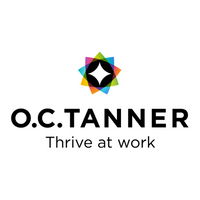How technology helps make a compelling evidence-backed case for reward investment

The answer lies in harnessing technology to supply compelling evidence which is backed by data-led insights. By leading the discussion using research findings, facts and figures, reward programmes are far more likely to be taken seriously at the top level rather than being seen as a ‘fluffy HR expense’. The ongoing use of technology can then help to monitor the success of reward programmes and steer improvements to it.
Use research to persuade stakeholders
In order to get stakeholders to buy-in to a reward programme, use compelling research to lay the foundations of success. For instance, research carried out by The O.C. Tanner Institute, which surveyed 10,000 employees in 12 countries, found that organisations with a great culture are 27 per cent more likely to have increased in revenue, 25 per cent more likely to have seen growth in team size and 29 per cent more likely to have employees innovating and performing great work, all in the last 12 months. Such persuasive findings will peak interest in a reward programme from the outset.
Harnessing tech and data
Use technology and data insights to support your reward efforts so that the approach is based on evidence rather than less concrete reasoning. As part of this, it’s important to consider the following:
- Put award programmes in the flow of work
A technology-based reward system can track uptake, usage and success, but it must be easy to use or it will simply be forgotten. Ensure employees can access your platform from anywhere, without leaving their flow of work. Embed tools in the apps and programmes they use every day such as Outlook, Salesforce and Slack, or integrate your data into existing tools like ADP and Workday. Incorporating tools into the flow of work makes it easier for your people to participate, thus increasing utilisation. - Calculate your return on investment (ROI)
Measure more than just the usage of your solutions to demonstrate success. Consider the three levels of measurement: usage metrics (who and how often employees are engaging with awards programmes); culture measures (how award initiatives are impacting engagement, perceptions about leadership and company culture); and business results (how your programmes relate to improving retention, customer satisfaction, sales, quality and metrics, for example). Remember to set solid baselines before you implement any new solutions and keep yourself accountable for the programme’s success by re-assessing impact regularly. - Use technology to empower your employees
Ensure everyone has the opportunity to access reward programmes, regardless of their level, function, area or location. And don’t forget remote employees. Build one central, global programme that all employees can use and ensure everyone has a consistent experience, no matter where they are. Have both mobile and offline tools available, as not all employees will have access to a computer or the internet. - Consider partnering with a third party
In the belief that it may provide a cost saving, many companies will try and keep their reward programmes in house, but this can be a time-consuming exercise and the ongoing administration can become a struggle to maintain. However, with the right provider and a formal programme, organisations can gain the support and insights of experts which can often help increase utilisation and success. 65 per cent of companies that use an external vendor found excellent value in their recognition programmes, compared to only 37 per cent of companies that create their own recognition solutions in-house. External vendors are also able to provide the latest in reward technology and solutions and should be able to deliver data that will demonstrate effectiveness.
Harnessing the power of reward technology can enable the monitoring of results in real-time, will allow you to assess progress and take actions to improve usage, impact, diversity and inclusion. Providing actionable data will also help gain buy-in from senior leaders who will determine budget and become the biggest advocates of reward programmes. And so think facts and figures because ultimately, an evidence-based approach to reward will create the most impact at the highest-level.
The author is Kerry Drury, Culture & Engagement Strategist at O.C.Tanner.
This article is provided by O.C.Tanner.
Supplied by REBA Associate Member, O. C. Tanner
Giving teams the integrated tools they need when, where and how they need them.







